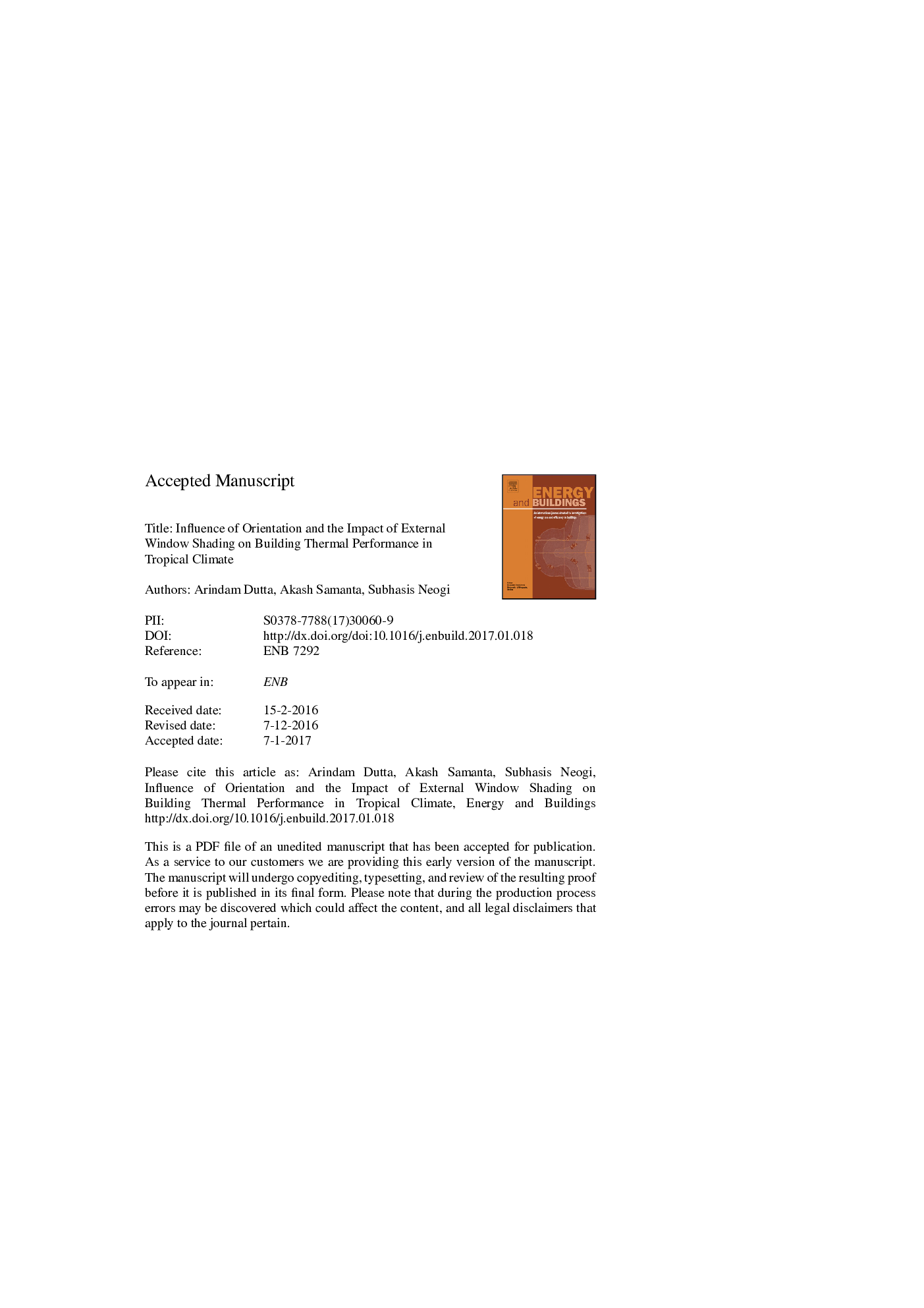| Article ID | Journal | Published Year | Pages | File Type |
|---|---|---|---|---|
| 4919356 | Energy and Buildings | 2017 | 23 Pages |
Abstract
Energy saving in buildings is a high-priority in developed countries as buildings are responsible for a substantial part of the energy consumption. Typically heating, cooling and artificial ventilation systems of a building are major consumer of energy. A validated Fortran 77 compiler program has been used to elaborate the influence of building orientation on building energy consumption. The amount of heat influx through windows on different oriented vertical walls for various direction has been compared and it has been found that heat gain through south oriented windows is maximum followed by East, West and North bound windows in a tropical climate of northern hemisphere. An experimentally designed, Programmable Logic Controller based movable exterior window shading device linked with sun path has been introduced through a validated TRNSYS building model to show the reduction in cooling load of a hospital building in tropical climate. The simulation study shows that maximum energy savings can be achieved in the month of June i.e. 14.9% and average energy savings is 9.8% annually by movable exterior window shading for a building in tropical climate. Through an economic analysis it has been established that the proposed exterior shading device is financially viable and the payback comes within 6 months. This study is useful for professionals who are responsible for decision-making during the design phase of energy-efficient buildings and can show a path for sustainable building design.
Related Topics
Physical Sciences and Engineering
Energy
Renewable Energy, Sustainability and the Environment
Authors
Arindam Dutta, Akash Samanta, Subhasis Neogi,
